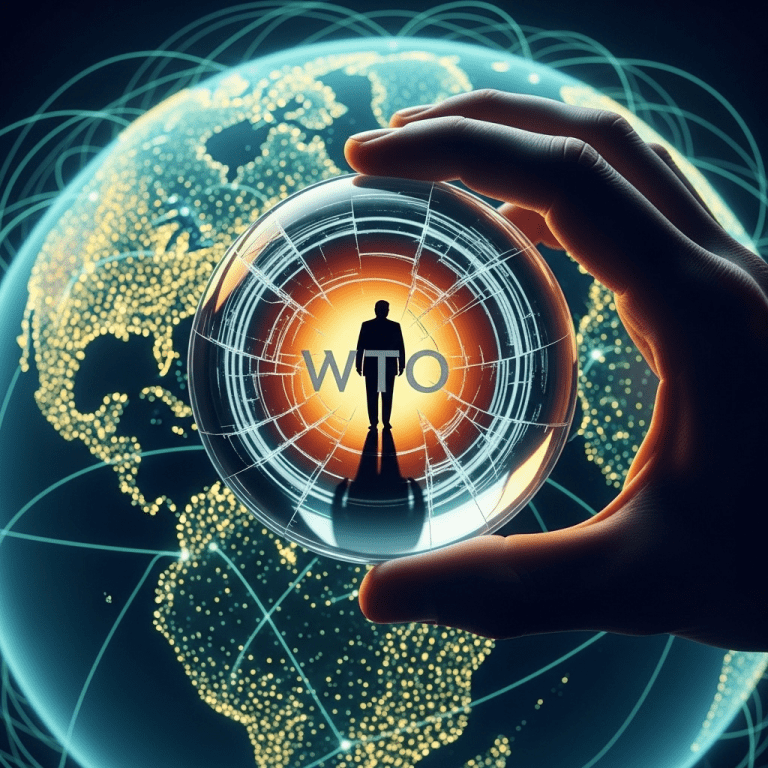The world economy in 2025 continues to grapple with uncertainty, as the WTO clings to signs Trump still needs it — sometimes. The World Trade Organization (WTO) remains a key player in mediating trade disputes, even as former President Donald Trump’s potential return and continued influence over trade policy cast a long shadow over the global economic landscape.
No Easy Answers: Why the WTO Clings to Signs Trump Still Needs It — Sometimes
The WTO has endured a challenging decade, with rising protectionism, stalled negotiations, and vocal criticism from populist leaders. Now, as conversations swirl about Trump’s appetite for another presidential term, the institution is determined to remain relevant. Global investors and trading partners closely scrutinize these developments, knowing a U.S. withdrawal or erosion of support could significantly disrupt global commerce.
The Trump Effect: A Turbulent History with the WTO
Trump’s earlier presidency openly questioned the value of the WTO, calling it “broken” and threatening U.S. withdrawal unless reforms were made. He regularly imposed tariffs and launched trade wars, notably with China and the European Union, bypassing multilateral dispute-resolution mechanisms. This approach led other nations to doubt the stability of longstanding trade agreements and the viability of the global rules-based system.
Areas Where Trump Used — and Needs — the WTO
Despite harsh rhetoric, the Trump administration didn’t completely disengage. The U.S. filed and responded to numerous cases before the WTO, leveraging its judgment to challenge Chinese subsidies and EU policies. The global business community notes that these actions suggest even the most skeptical leaders recognize the value of multilateral engagement, especially when U.S. interests are at risk.
2025 and Beyond: The WTO’s Shifting Role in a Trumpian Era
This year, as Trump’s influence lingers, the WTO faces critical questions of reform and purpose. Governments and analysts observe that the WTO clings to signs Trump still needs it — sometimes, especially when international pressure or uncertainty makes bilateral deal-making unviable. With crucial U.S.-China and U.S.-EU disputes ongoing, America continues to rely on the WTO framework, even as criticism persists.
Signs of Institutional Resilience
Key indicators show the WTO’s staying power. Recent decisions on steel, agricultural subsidies, and digital trade have further embedded the organization in the heart of trade policy. Notably, U.S. negotiators, even those with ties to Trump, still participate in technical committees and high-level summits. The global economy depends on at least some degree of predictability — an objective only achievable if the world’s largest economies remain participants rather than outsiders.
The Balance of Power: Allies, Rivals, and Unpredictability
America’s economic partners watch closely to see whether signals from Trump or his advisers are genuine threats or tactical leverage. Countries like Japan, Canada, and Australia emphasize WTO mechanisms when challenged by U.S. tariffs or sanctions. China, meanwhile, has accelerated its own integration into alternative regional trade pacts, but continues to utilize the WTO dispute system when beneficial.
Economic Stakes and Investor Reactions
Market analysts highlight that any move to abandon or diminish the WTO could roil supply chains, dampen growth, and introduce legal chaos. The uncertainty alone may be enough for even the most skeptical policymakers to keep one foot firmly planted within the multilateral system, as the costs of withdrawal remain difficult to predict and potentially severe.
The Future: Reform or Retreat?
As the WTO clings to signs Trump still needs it — sometimes, its long-term survival may hinge on meaningful reform. The institution faces pressure to address gaps in digital trade, environmental standards, and state subsidies — issues at the heart of both Trump’s agenda and global priorities for the decade ahead. Only by adapting will the WTO hope to outlast shifting political winds and deliver stability when economies need it most.
Conclusion: A Vital, If Vulnerable, World Trade Organization
The coming months will determine whether the WTO can convert reluctant reliance into renewed leadership. Businesses, investors, and policymakers recognize that, while populist rhetoric may antagonize the institution, few viable alternatives exist for managing global trade. As 2025 unfolds, the central paradox remains: the WTO clings to signs Trump still needs it — sometimes, because global commerce cannot afford for any nation, no matter how powerful, to go it entirely alone.









